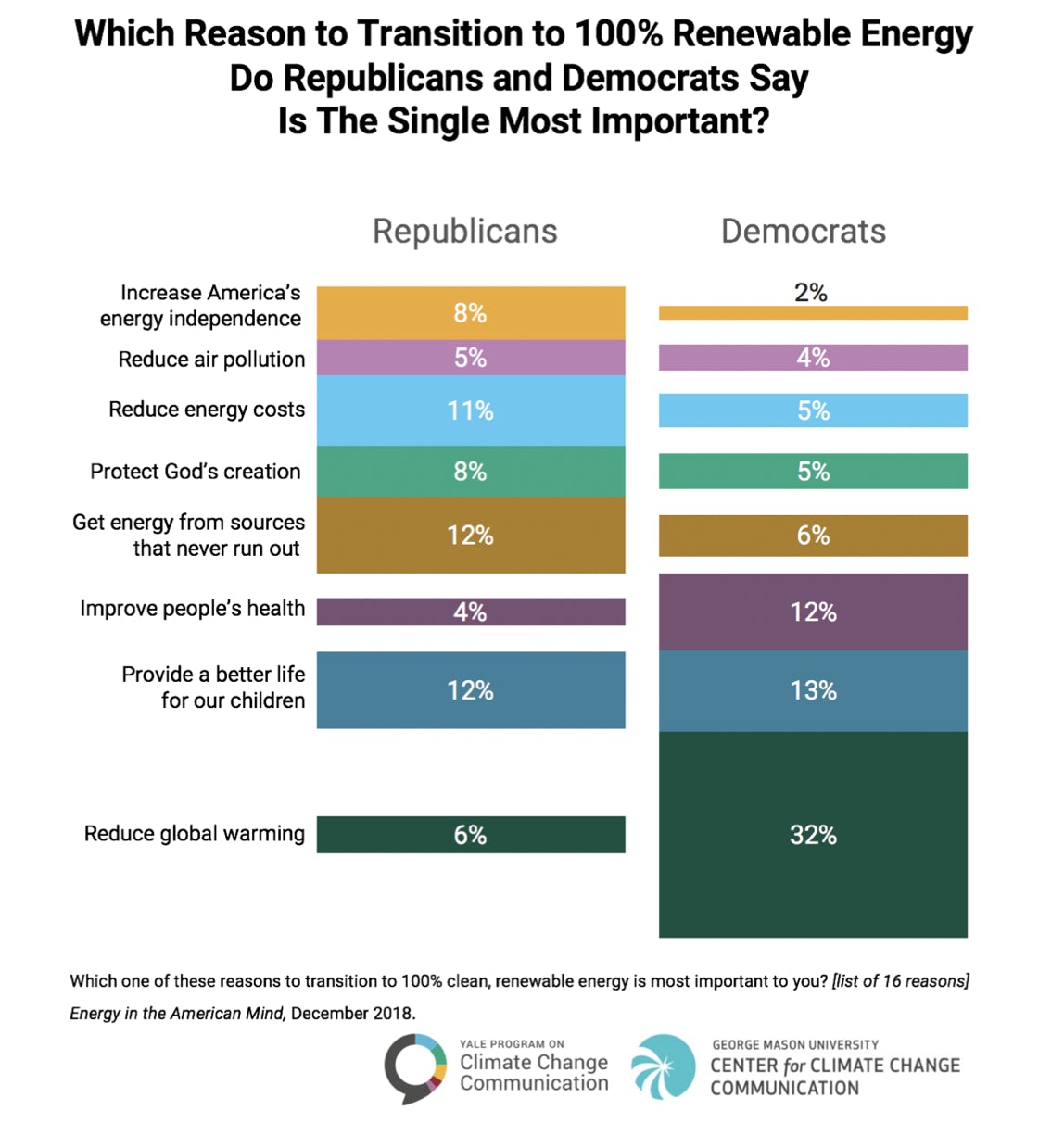It is fairly well known that effective communications begins with knowing your audience. The next step is knowing what hot buttons to use.
I had the fortunate opportunity to attend an online presentation by Abel Gustafson, an Assistant Professor at the University of Cincinnati. Titled "Renewable Energy Public Opinion and Strategies for Effective Communication", it was hosted by the Irving Institute at Dartmouth. In the end, Dr. Gustafson shared those hot buttons and provided links to interactive tools to learn more.
It was shown that most Americans consider climate change an issue and support for requiring electric utilities to use 100% renewable energy by 2050 - independent of political affiliation. However, the reasons why there is support differs between Republicans and Democrats as shown in one of the slides presented.
These are the hot buttons. This slide provides insight into how best to communicate and educate the public on clean renewable energies, climate change, and decarbonization.
Much of the data presented was using political demographics. While other demographics were briefly shown, it was noted that the polarization along political affiliation was most significant.
At the end, Dr. Gustafson pointed out interactive visualizations, showing off the Yale Climate Opinion Maps as an example. This interactive web based tool provides a wealth of survey results in US map form based on dozens of climate related questions. The visualization breaks down the data to various levels - from national to individual county and everything in-between. This provides additional insight into how to best reach people in this space.
As a final note, credit for the presentation material goes to the Yale Program on Climate Change Communication and the George Mason University Center for Climate Change Communication, as most of the research was funded and produced through these research centers. Dr. Gustafson was kind enough to share his slides with me and they are stored in the DecarbToday Library. I am guessing they will appear within the sponsoring research centers shortly.

Tags